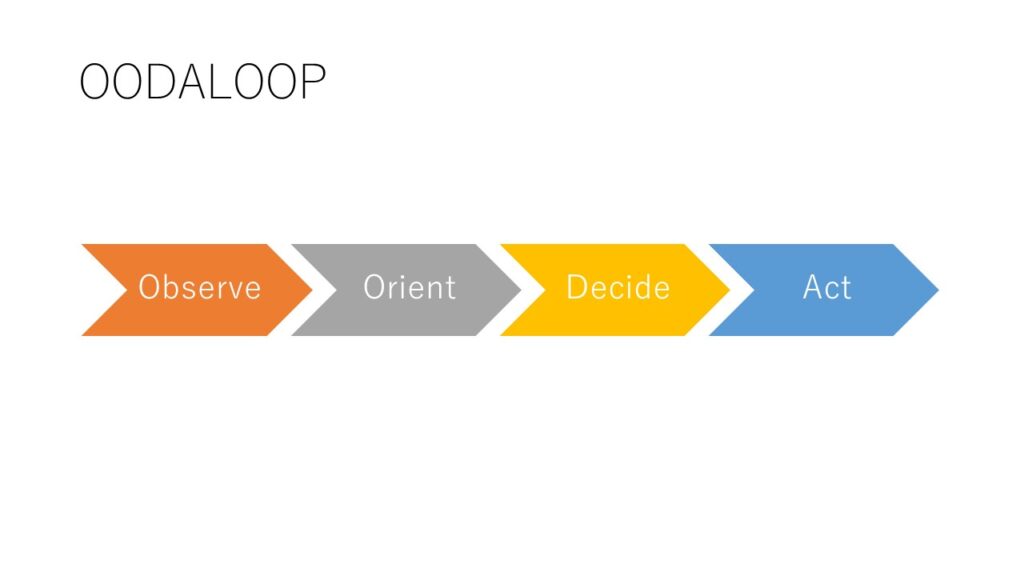Effectiveness of OODA LOOP
In contrast to the PDCA cycle, which cannot cope with high uncertainty, OODA LOOP can actually “create uncertainty in the opponent.”

Observe: OODA LOOP is not a cyclical way of thinking like the PDCA cycle but a linear concept. The foundation of OODA LOOP is the “observe” stage, where you need to observe the surroundings and accurately understand your own situation by observing changes in information and the situation.
Orient: While observation is the foundation of OODA LOOP, the “orient” stage is the core. Here, you integrate and analyze the information obtained to make judgments. In many cases, these judgments are made unconsciously and are often influenced by organizational culture, personal experience, and genetic traits.
Decide: The framework of “decision-making” is less well-defined compared to the other stages, as in OODA LOOP, “orientation ≈ decision,” meaning that the decision is often synonymous with the judgment. In most cases, the judgment from the orientation phase directly leads to action. However, due to inadequate communication within organizations, sometimes orientation does not immediately lead to action. In such cases, explicitly going through the “decision” stage helps achieve consensus within the organization.
Act: In OODA LOOP, actions are often controlled by the orientation phase. Orientation is based on information obtained and unconscious factors like organizational culture and experience. In other words, if you need to explain OODA LOOP in three seconds, it can be summarized as “when something happens, try it first.” Actions resulting from rapid decision-making can seize the initiative from the opponent and create confusion. Confusion leads to more confusion, escalating like a snowball within the opponent. This can paralyze the opponent’s command structure and ultimately, their organization.
Feedback
In the section about the PDCA cycle, it was mentioned that the “evaluation and improvement” processes are essential. How is “evaluation and improvement” conducted in the OODA LOOP?
This leads to “observe.” It means observing the changes in the situation, both yours and the opponent’s, which occur at each stage of the OODA LOOP. This continuous observation of the changes in your own and the opponent’s situation is the essence of “evaluation and improvement” in OODA LOOP.

コメント